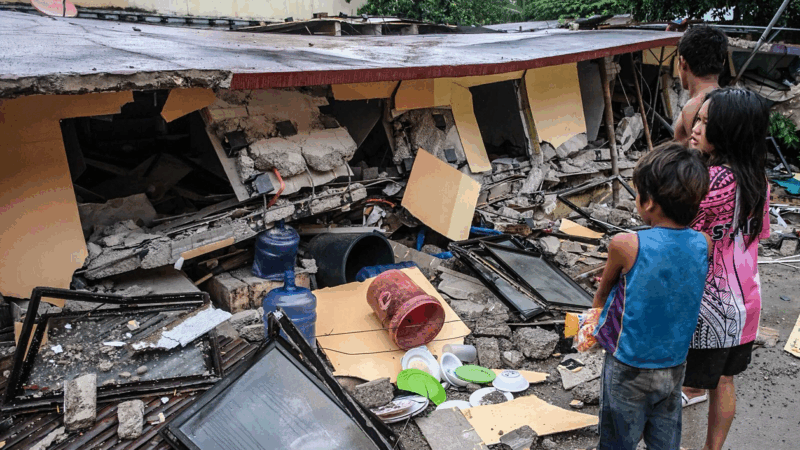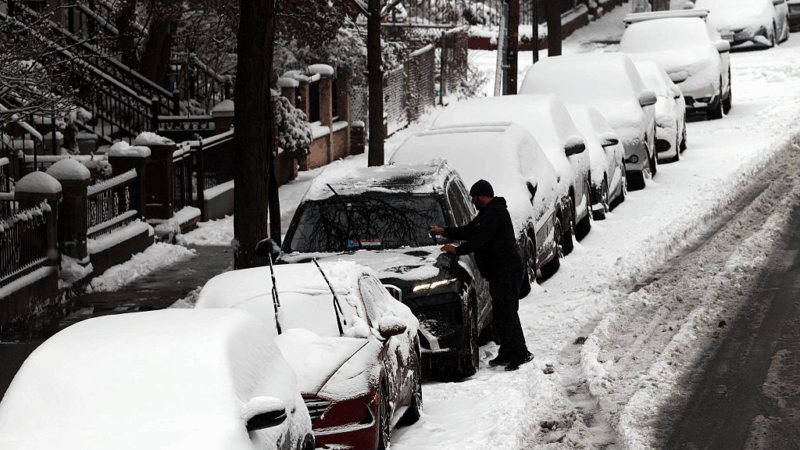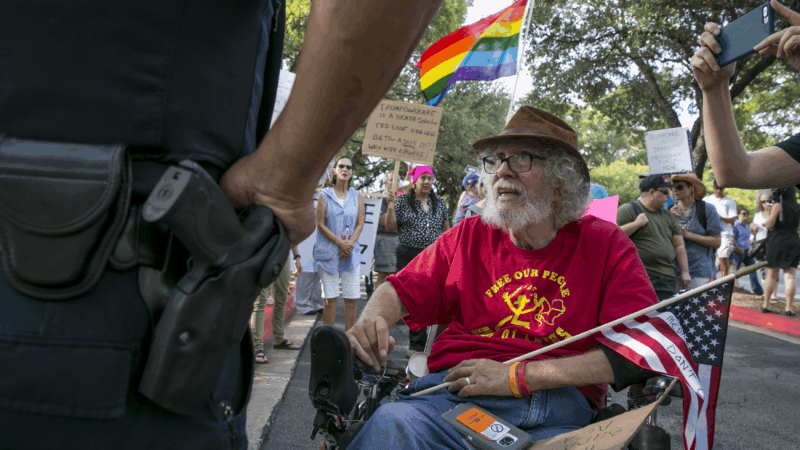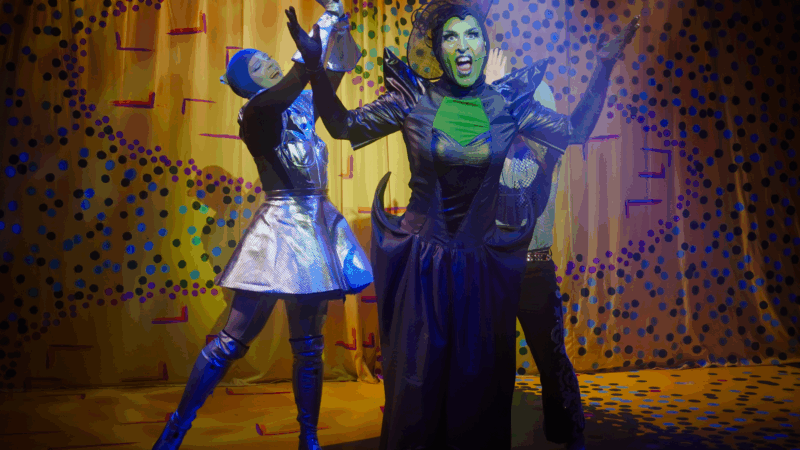Dozens killed in a powerful earthquake that hit the Philippines
CEBU, Philippines — Rescuers used backhoes and sniffer dogs to look for survivors in collapsed houses and other damaged buildings in the central Philippines Wednesday, a day after an earthquake killed at least 69 people.
The death toll was expected to rise from the magnitude-6.9 earthquake that hit at about 10 p.m. Tuesday and trapped an unspecified number of residents in the hard-hit city of Bogo and outlying rural towns in Cebu province.
Sporadic rain and damaged bridges and roads have hampered the race to save lives, officials said.
“We’re still in the golden hour of our search and rescue,” Office of Civil Defense deputy administrator Bernardo Rafaelito Alejandro IV said in a news briefing. “There are still many reports of people who were pinned or hit by debris.”
The epicenter of the earthquake, which was set off by movement in an undersea fault line at a dangerously shallow depth of 5 kilometers (3 miles), was about 19 kilometers (12 miles) northeast of Bogo, a coastal city of about 90,000 people in Cebu province where about half of the deaths were reported, officials said.
The Philippine government is considering whether to seek help from foreign governments based on an ongoing rapid damage assessment, Alejandro said.
The United States, Japan, Australia and the European Union expressed condolences.
“We stand ready to support the Philippine government’s response as friends, partners, allies,” MaryKay Carlson, U.S. ambassador to the Philippines, said in a post on social media platform X.

Workers were trying to transport a backhoe to hasten search and rescue efforts in a cluster of shanties in a mountain village hit by a landslide and boulders, Bogo city disaster-mitigation officer Rex Ygot told The Associated Press early Wednesday.
“It’s hard to move in the area because there are hazards,” said Glenn Ursal, another disaster-mitigation officer, who added that some survivors were brought to a hospital from the mountain village.
Deaths also were reported from the outlying towns of Medellin and San Remigio, where three coast guard personnel, a firefighter and a child were killed separately by collapsing walls and falling debris while trying to flee to safety from a basketball game in a sports complex that was disrupted by the quake, town officials said.
The earthquake was one of the most powerful to batter the central region in more than a decade and it struck while many people slept or were at home.
The Philippine Institute of Volcanology and Seismology briefly issued a tsunami warning and advised people to stay away from the coastlines of Cebu and the nearby provinces of Leyte and Biliran due to possible waves of up to 1 meter (3 feet).
No such waves were reported and the tsunami warning was lifted more than three hours later, but thousands of traumatized residents refused to return home and chose to stay in open grassy fields and parks overnight despite intermittent rains.
Cebu and other provinces were still recovering from a tropical storm that battered the central region on Friday, leaving at least 27 people dead mostly due to drownings and falling trees, knocking out power in entire cities and towns and forcing the evacuation of tens of thousands of people.
Schools and government offices were closed in the quake-hit cities and towns while the safety of buildings were checked. More than 600 aftershocks have been detected after Tuesday night’s temblor, Philippine Institute of Volcanology and Seismology director Teresito Bacolcol said.
Rain-soaked mountainsides were more susceptible to land- and mudslides in a major earthquake, he warned.
“This was really traumatic to people. They’ve been lashed by a storm then jolted by an earthquake,” Bacolcol said. “I don’t want to experience what they’ve gone through.”
The Philippines, one of the world’s most disaster-prone countries, is often hit by earthquakes and volcanic eruptions due to its location on the Pacific “Ring of Fire,” an arc of seismic faults around the ocean. The archipelago is also lashed by about 20 typhoons and storms each year.
Jeffrey R. Holland, next in line to lead Church of Jesus Christ of Latter-day Saints, dies at 85
Jeffrey R. Holland led the Quorum of the Twelve Apostles, a key governing body. He was next in line to become the church's president.
Winter storm brings heavy snow and ice to busy holiday travel weekend
A powerful winter storm is impacting parts of the U.S. with major snowfall, ice, and below zero wind chills. The conditions are disrupting holiday travel and could last through next week.
Disability rights advocate Bob Kafka dead at 79
Bob Kafka was an organizer with ADAPT (American Disabled for Attendant Programs Today), a group which advocates for policy change to support people with disabilities.
‘It’s behind you!’ How Britain goes wild for pantomimes during the holidays
Pantomimes are plays based on a well-known story — often a fairy tale — which are given a bawdy twist. The audience is expected to join in throughout, shouting as loudly as they can.
Kennedy Center vows to sue musician who canceled performance over Trump name change
The Kennedy Center is planning legal action after jazz musician Chuck Redd canceled an annual holiday concert. Redd pulled out after President Trump's name appeared on the building.
Our top global photo stories from 2025: Fearless women, solo polar bear, healing soups
These stunning photos include a polar bear in a Chinese zoo, a teen in Zambia facing an uncertain future, Mongolian kids watching TV in a tent, a chef prepping a bowl of good-for-you soup.







